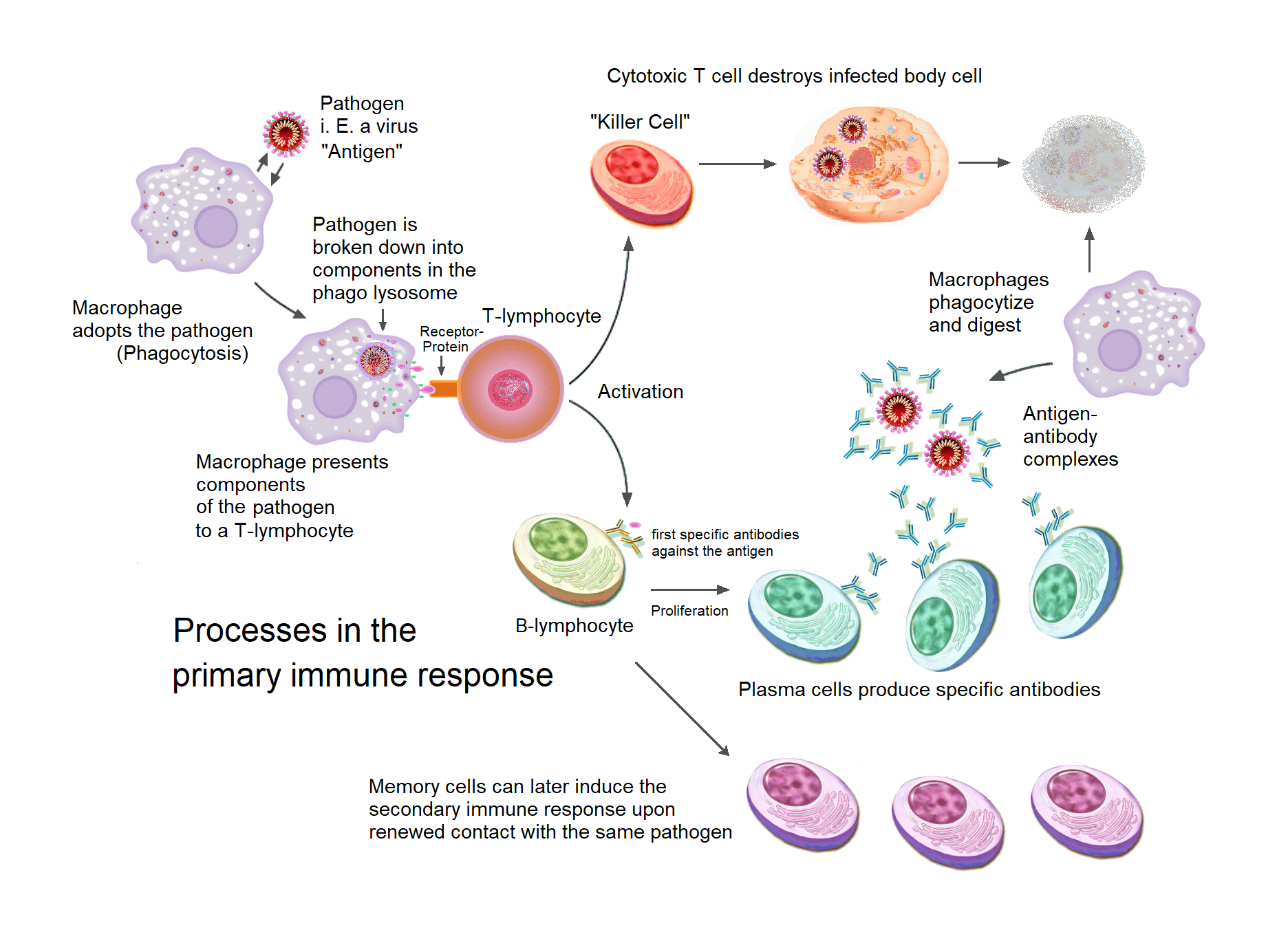5 Key Ways Immune Response Works: Quick Worksheet Guide

Understanding how our immune system functions can be a bit like unraveling a complex puzzle. However, with the right guide, the intricate workings of our body's defense mechanisms can become clearer. Here, we'll delve into 5 Key Ways Immune Response Works to provide you with an insightful worksheet guide to enhance your understanding.
Innate Immunity: The First Line of Defense

Innate immunity is our body’s first and immediate response to pathogens. Here’s how it operates:
- Physical Barriers: Skin, mucous membranes, tears, and saliva act as physical barriers preventing microbial invasion.
- Chemical Barriers: Enzymes like lysozyme in tears and saliva break down bacterial walls, while stomach acid kills ingested pathogens.
- Inflammation: When a microbe breaches these barriers, cells release histamine, causing blood vessels to dilate and increase blood flow to the infection site, which leads to swelling and redness - signs of inflammation.
- Phagocytosis: White blood cells like macrophages engulf and destroy pathogens.
- Interferons: These proteins signal neighboring cells to heighten their antiviral defenses.
Adaptive Immunity: The Specific Attack

Following the innate immune response, if a pathogen persists, the adaptive immunity comes into play:
- Antigen Recognition: Specific cells (T and B lymphocytes) recognize antigens, leading to…
- Lymphocyte Proliferation: These cells multiply to create an army to tackle the invader.
- Antibody Production: B cells produce antibodies that can neutralize or mark pathogens for destruction.
- Cell-Mediated Immunity: Cytotoxic T cells directly destroy infected cells.
- Memory Cells: Some cells retain “memory” of the pathogen, ensuring a faster and stronger response upon reinfection.
Cytokines: Signaling Molecules

Cytokines are the messengers of the immune system, orchestrating responses:
- Chemotaxis: Attracts immune cells to the site of infection.
- Cell Activation: Activates cells like macrophages or lymphocytes to mount an effective defense.
- Inflammation: They trigger inflammation by inducing vascular changes.
- Fever: Some cytokines like interleukin-1 can induce fever, increasing metabolic rate to combat infection.
🗣️ Note: Cytokines can have a dual nature, acting in both pro-inflammatory and anti-inflammatory pathways depending on the immune needs.
Complement System: Amplifying the Response

The complement system is a group of blood proteins:
- Tagging Pathogens: These proteins tag pathogens for destruction or removal by phagocytes.
- Direct Lysis: They can directly pierce microbial cell membranes, leading to lysis.
- Inflammation and Chemotaxis: Similar to cytokines, they amplify the inflammatory response and attract immune cells.
| Component | Function |
|---|---|
| C3 | Key to the activation of the complement system, creating opsonins that tag invaders |
| C5 | Forms part of the membrane attack complex (MAC) that lyses cells |

🧬 Note: The complement system can be activated through three pathways: the classical, alternative, and lectin pathways.
Immunological Memory: The Body’s Archive

One of the most sophisticated features of the immune system is its ability to remember:
- Primary Response: The first time we encounter a pathogen, the immune response is relatively slow.
- Memory Cells: Following this exposure, memory B and T cells are created, ready for a…
- Secondary Response: If the same pathogen attacks again, memory cells ensure a swift and more potent response, often before symptoms even appear.
After exploring these five key aspects of the immune response, it's clear that our bodies have an intricate network designed to protect us from countless threats. The innate immunity quickly responds with general defenses, while the adaptive immunity fine-tunes the attack with precision. Cytokines communicate the need for action, the complement system amplifies the response, and the immunological memory ensures we're better prepared for future encounters with pathogens. This knowledge not only helps in appreciating the complexity of our own biology but also in understanding why vaccinations and herd immunity play a crucial role in our collective health strategy.
What is the role of the innate immune system?

+
The innate immune system acts as the first line of defense, providing immediate, broad-spectrum protection against pathogens through physical and chemical barriers, inflammation, phagocytosis, and the release of interferons.
Why do cytokines cause fever?

+
Cytokines like interleukin-1 signal the hypothalamus to raise the body’s temperature, creating a less favorable environment for many pathogens to thrive, thus boosting the immune response.
How does the complement system work?

+
The complement system consists of proteins in the blood that enhance the ability of phagocytic cells to clear pathogens by tagging them or directly lysing them, amplifying the inflammatory response, and attracting immune cells to the site of infection.
What is immunological memory?

+
Immunological memory is the ability of the immune system to recall prior encounters with pathogens. Memory B and T cells are created after the initial infection, providing a quicker and more effective response to subsequent infections.
Can the immune system ever fail?

+
Yes, the immune system can fail due to various reasons including autoimmune diseases, where it attacks the body’s own tissues, immunodeficiency disorders, where it’s underactive, and during conditions like chronic stress or malnutrition.



